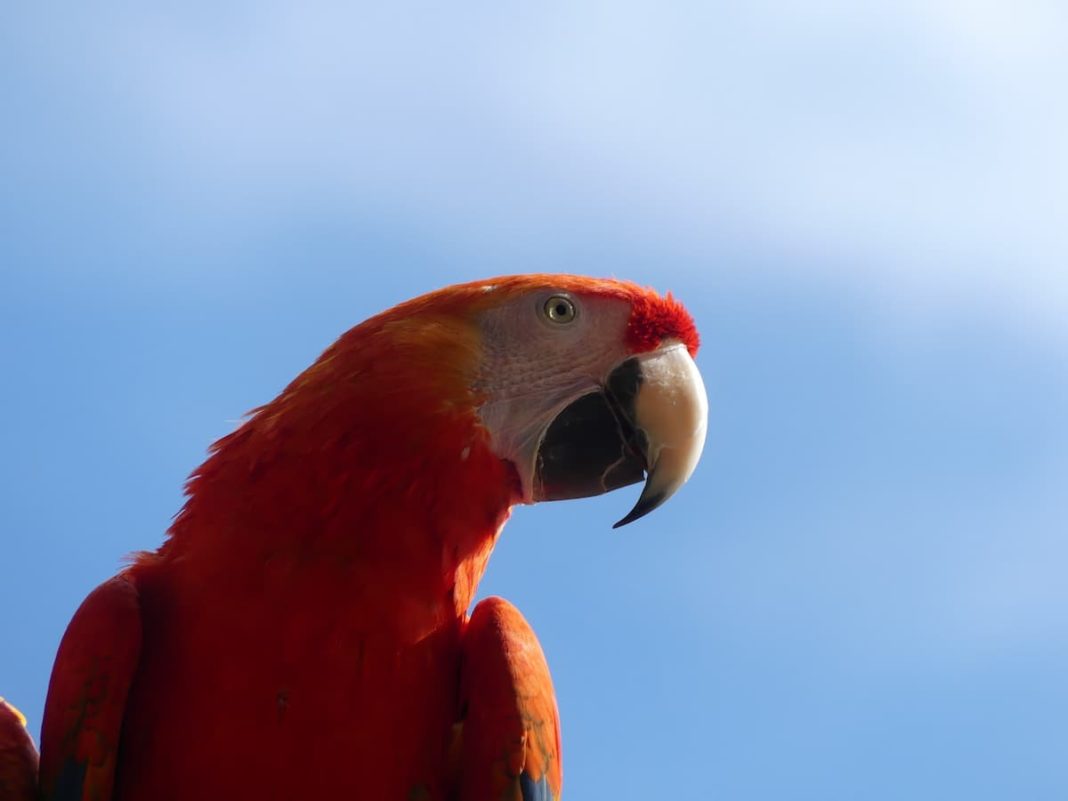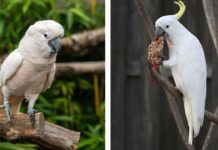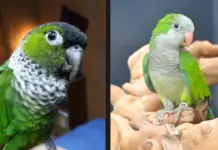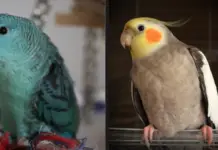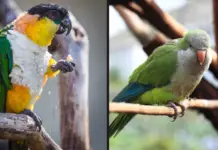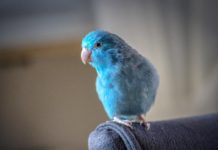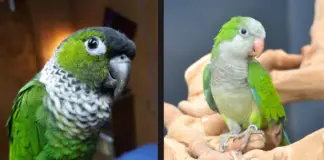Quicklinks:
- How To Tame An Aggressive Parrot
- How To Teach A Bird To Step Up
- Parrot Towel Training
- Why Does My Parrot Chase Me?
- Should I Trim My Parrot’s Wings?
One of the best ways to prevent a parrot from biting is to work with your bird as early as possible to help stop this behavior from starting in the first place. In this article, we’ll go through some practical training advice that’ll benefit all parrots.
Question: How can I work with my young parrot while they’re still young to help prevent excessive biting in the future?
How To Tame An Aggressive Parrot
Like humans, if parrots do not learn cooperative habits along with understanding acceptable behavior by the time they reach sexual maturity, then they may become completely out of control later in life. As a matter of fact, parrots appear to learn cooperative behavior better just after weaning. Otherwise, it’s very easy for them to develop territorial and aggressive behaviors during the developmental period sometimes called the “terrible twos” (this usually hits parrots at about 12-18 months, but can be seen sooner).
You can’t address poor behavior in parrots with punishment. You must help the bird to form good habits in order to ensure a happy and healthy life.
Almost all behavior is comprised of a series of habits that are routinely re-enacted. Cooperation can be habitual. Biting and chasing can be habitual. A companion parrot that learns to persistently cooperate will be less likely to express aggression toward humans or try to dominate humans in the environment. In order to create good habits and to establish a pattern of cooperation in the parrot’s behavior, you can practice a couple of interactive exercises — step-ups and the towel game — in a neutral territory.
How To Teach A Bird To Step Up
In order for your bird to have trust and confidence while out of its cage or other established territory, your parrot must first be patterned with regular and diverse step-up practice, helping them to cooperate better in neutral territory. A bird that won’t cooperate with you in a neutral territory will probably refuse to cooperate with you in its own territory (cage). From the parrot’s first days in the home, daily step up practice should include:
- Stepping your parrot up from an unfamiliar stationary perch onto your hand
- Stepping the bird up from hand to hand
- Stepping the bird onto and off of hand-held perches
Later, when your bird is expressing its normal tendency to protect its cage or when they’re feeling feisty for any reason, the habit of cooperation that you’ve been working on can be maintained, without fear of them nipping, by handling your bird with handheld perches. Handheld perches may sometimes be necessary or necessary for some people in the bird’s established territory.
Parrot Towel Training
A young parrot can easily be carried around in a towel like a human baby. Continuing and maintaining this behavior in a playful way will help to ensure the bird’s temperament for its lifetime. A bird that routinely plays peek-a-boo in the towel and is unafraid of the towel will have a much easier time when they need to go to the veterinarian.
Why Does My Parrot Chase Me?
Because of some parrots’ instinct for territorial aggression, it’s important not to do any maintenance to your parrot’s cage while the bird is still inside. A hand that touches a parrot’s food dish or favorite toy should expect a ferocious attack. This is provocative behavior at its worst. They could stimulate biting and, if repeated, will later pattern habitual chasing and biting behaviors. Just open the door, let the bird come out to the top of the door, then step the well-practised bird up to your hand or hand-held perch and put it on a playpen. Then food, water, toys, or perches can be safely changed, as a result, your parrot won’t learn how much fun it is to chase hands or other human parts.
Should I Trim My Parrot’s Wings?
Flying Parrots are especially prone to accidents in the home, including flying away. Wing feathers could be trimmed at least a couple of times yearly to prevent drowning in the toilet, burning up in the skillet, or crashing into the ceiling fan. In addition, a flying parrot may become increasingly territorial, domineering, and belligerent. Under the wrong circumstances, a flying parrot can take chasing to a whole new level.
If your bird’s wing trim is properly maintained, and the parrot has multiple places on which to spend time, then it will have to depend upon humans to move it from one place to another. This transportation dependence, combined with access to multiple territories, will contribute significantly to maintaining non-aggressive behavior in your parrot.

